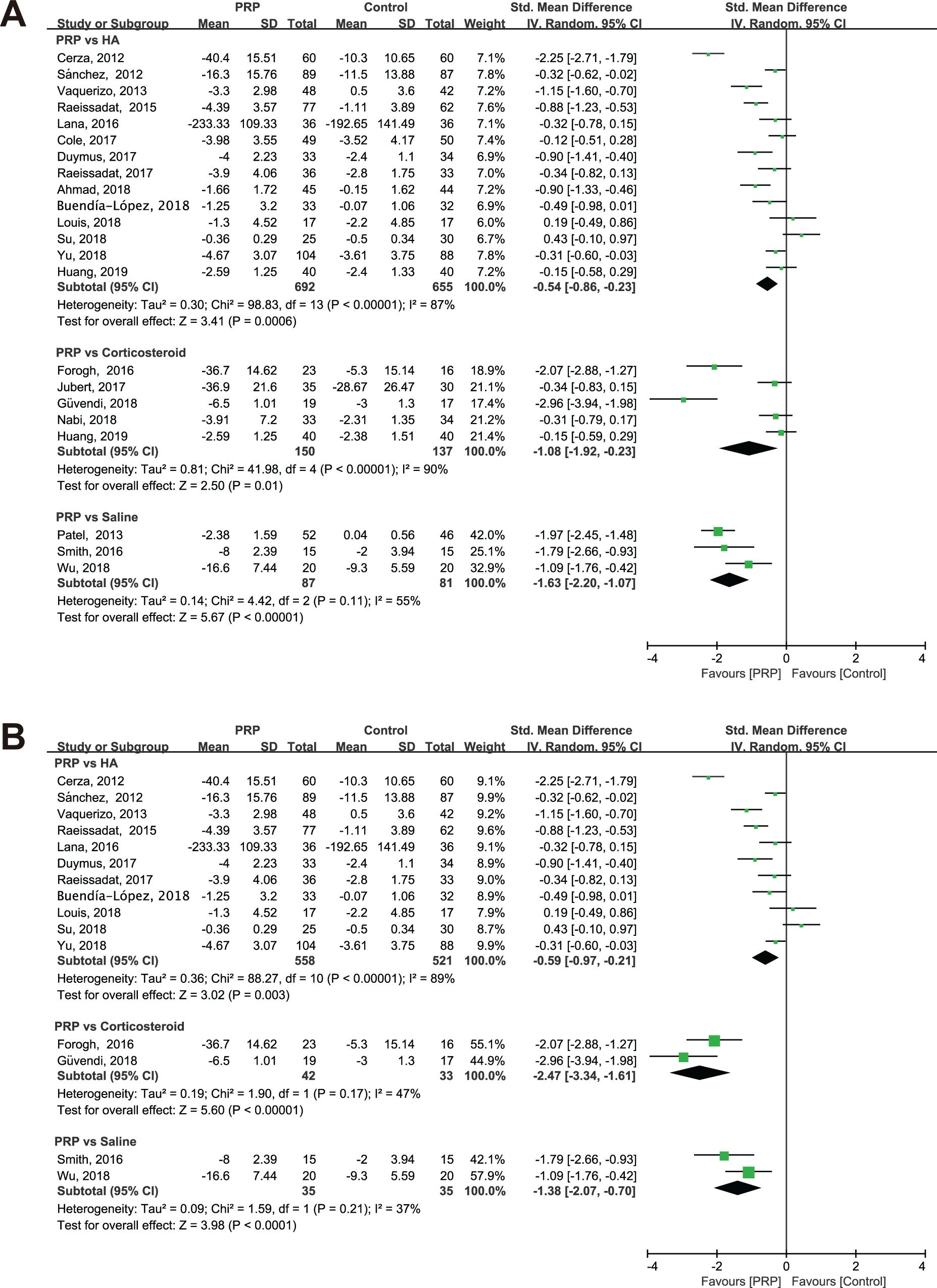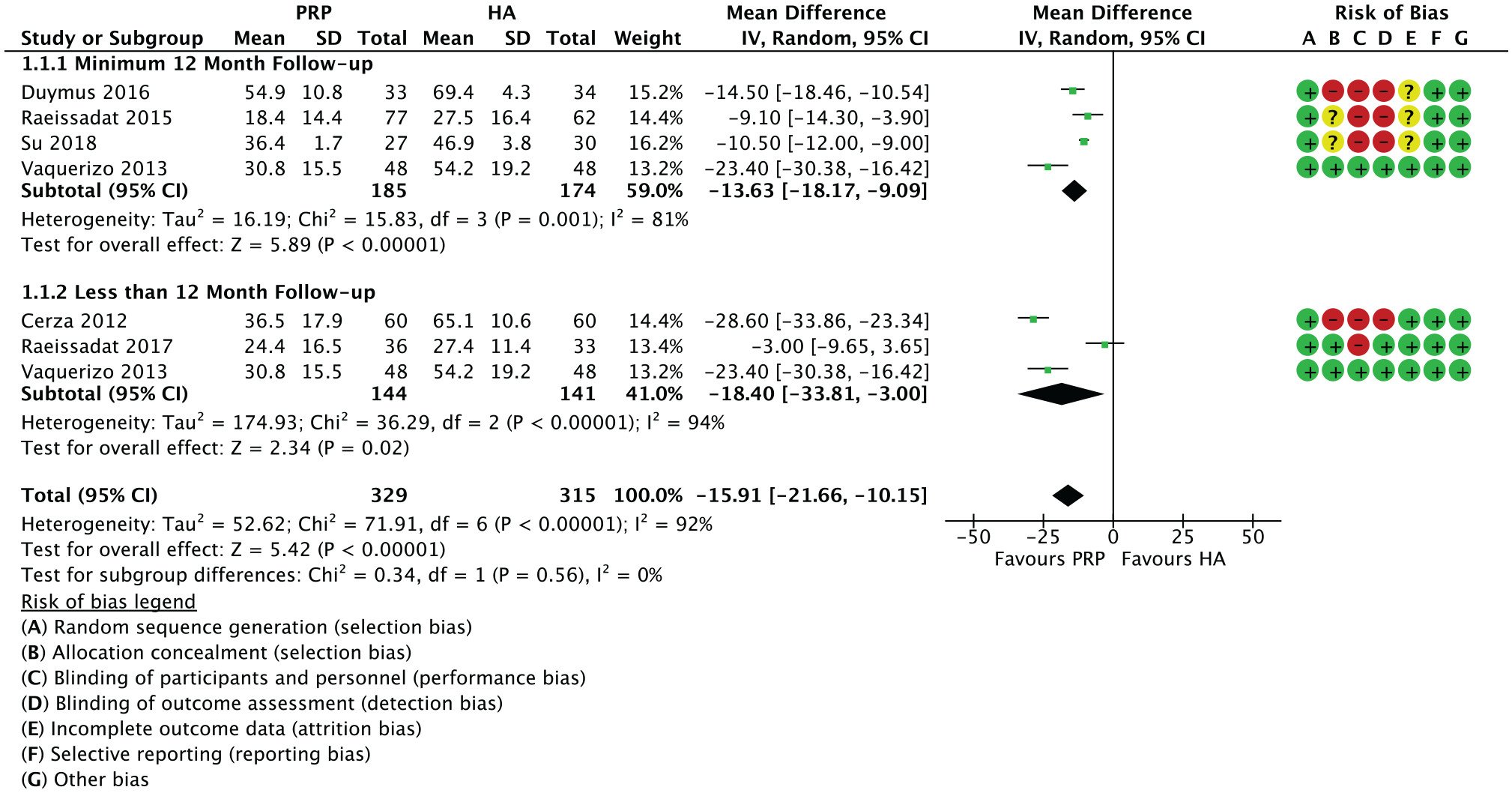Knee Osteoarthritis: PRP Is An Evidence-Based Treatment Option
Introduction
Platelet-rich plasma (PRP) is a treatment that uses the body’s own platelets to promote healing of damaged or diseased tissues. PRP has a concentrated complex of growth factors which, when delivered to an area of injury, can stimulate improvement in pain and function.
The Problem in Knee Osteoarthritis
Foran et al., OrthoInfo AAOS, 2014
Osteoarthritis is defined as degenerative disease of a joint which is the result of progressive loss of articular cartilage. The cartilage is essentially the “cushioning” of the joint. Patients may experience pain with activity, knee stiffness, knee swelling, pain with prolonged sitting, and pain that worsens over time.
There are catabolic (“breakdown”) factors (IL-1B and TNF-alpha) present in knee osteoarthritis which may lead to chondrocyte (cartilage cell) deterioration. PRP contains growth factors which counteract the cartilage breakdown and help enhance cartilage repair (such as IL1-receptor antagonist) (Sampson et al. Curr Rev Musculoskelet Med, 2008). The result is decreased joint inflammation and creation of a healthier joint environment.
Corticosteroid Injections For Knee Osteoarthritis – Short-Term Benefit with Longer-Term Concerns
Corticosteroid (“cortisone”) injections have been a mainstay of treatment for knee osteoarthritis for decades. Numerous studies have shown corticosteroid injections to be beneficial for short-term (1-3 months) pain relief. However, recent literature shows corticosteroid displays a dose-dependent deleterious effect on the cartilage of the knee joint (Wernecke et al., Orthop J Sports Med 2015). Therefore, while corticosteroid may provide short-term pain relief, it may cause longer term negative effects on the health of the knee joint.
A recent systematic review and meta-analysis compared corticosteroid injections with other injections for the treatment of knee osteoarthritis. The study included 10 randomized-controlled trials with a total of 763 patients. The study found recurrent cortisone injections often provide inferior (or non-superior) symptom relief compared to other injectables (PRP, gel injections) at 3 months and beyond post-injection. Other injectables such as PRP and gel injections often yield greater improvements in pain and function up to 24 months post-injection (Donovan et al., Osteoarthritis Cartilage 2022).
PRP for Knee Osteoarthritis – What Does Patient-Reported Outcome Data Show?
The past several years have shown significant progression in understanding of the role PRP in the treatment of knee osteoarthritis.
A recent meta-analysis of 21 randomized controlled trials evaluated PRP in comparison to corticosteroid, saline, and hyaluronic acid (gel injection). The study results showed patients with PRP injection had superior outcomes compared to patients receiving corticosteroid, saline, or gel injections at minimum 6 month follow-up (Nie et al., Orthop J Sports Med 2021).
Forest plot of study by Nie et al. showing overall better patient-reported outcomes for patients receiving PRP injection compared to those receiving hyaluronic acid (gel injection), corticosteroid (cortisone), or saline (sterile water).
Another systematic review and meta-analysis evaluated patient-reported outcomes from 18 level 1 studies comparing hyaluronic acid (gel) injections with PRP. 811 patients received PRP while 797 received hyaluronic acid. The average post-injection follow-up was 11.1 months. Compared to pre-injection, improvements in pain and function were statistically significantly greater in the PRP group (44.7%) compared to the hyaluronic acid group (12.6%) (Belk et al., Am J Sports Med 2021).
Forest plot of study from Belk et al. showing better patient-reported outcomes in patients receiving PRP injection compared to those receiving hyaluronic acid (gel) injection.
Can PRP Delay the Need for Total Knee Arthroplasty (Replacement)?
Total knee arthroplasty (replacement) is a surgical treatment which involves replacing the arthritic knee joint with a prosthetic joint. While outcomes are overall quite favorable, patients may wish to delay surgery or may not be candidates for surgery due to other medical conditions.
A recent retrospective study evaluated 667 patients from the years 2014-2019 with moderate to severe knee osteoarthritis who were eligible for a total knee arthroplasty. The patients received a PRP injection in 2014 and were followed for 5 years post-injection. 74.1% of patients achieved a delay in total knee arthroplasty of more than 1.5 years with a median delay of 5.3 years. 85.7% of patients did not undergo total knee arthroplasty during the 5-year follow-up (Sanchez et al., Int Orthop 2021). The results suggest application of PRP for patients with knee osteoarthritis may delay the need for total knee arthroplasty.
Key Take-Home Points
PRP contains growth factors which may counteract the degenerative process of knee osteoarthritis.
While corticosteroid (cortisone) injections may provide short-term relief, studies show negative long-term effects on the health of the knee joint
High-level evidence indicates PRP provides superior patient-reported outcomes 3 months and beyond post-injection compared to corticosteroid, hyaluronic acid (gel), and saline (sterile water) injections.
PRP may be a helpful treatment for delaying or avoiding total knee arthroplasty (replacement).
Appointment
If you are a patient with knee osteoarthritis and interested in exploring treatment for your condition, please schedule a consultation with Dr. Verma to discuss the available options.
References
Foran J. Arthritis of the Knee - OrthoInfo - AAOS. Aaos.org. Published 2014. https://orthoinfo.aaos.org/en/diseases--conditions/arthritis-of-the-knee/
Sampson S, Gerhardt M, Mandelbaum B. Platelet rich plasma injection grafts for musculoskeletal injuries: a review. Curr Rev Musculoskelet Med. 2008;1(3-4):165-174. doi:10.1007/s12178-008-9032-5
Wernecke C, Braun HJ, Dragoo JL. The Effect of Intra-articular Corticosteroids on Articular Cartilage: A Systematic Review. Orthop J Sports Med. 2015;3(5):2325967115581163. Published 2015 Apr 27. doi:10.1177/2325967115581163
Donovan RL, Edwards TA, Judge A, Blom AW, Kunutsor SK, Whitehouse MR. Effects of recurrent intra-articular corticosteroid injections for osteoarthritis at 3 months and beyond: a systematic review and meta-analysis in comparison to other injectables. Osteoarthritis Cartilage. 2022;30(12):1658-1669. doi:10.1016/j.joca.2022.07.011
Nie LY, Zhao K, Ruan J, Xue J. Effectiveness of Platelet-Rich Plasma in the Treatment of Knee Osteoarthritis: A Meta-analysis of Randomized Controlled Clinical Trials. Orthop J Sports Med. 2021;9(3):2325967120973284. Published 2021 Mar 2. doi:10.1177/2325967120973284
Belk JW, Kraeutler MJ, Houck DA, Goodrich JA, Dragoo JL, McCarty EC. Platelet-Rich Plasma Versus Hyaluronic Acid for Knee Osteoarthritis: A Systematic Review and Meta-analysis of Randomized Controlled Trials. Am J Sports Med. 2021;49(1):249-260. doi:10.1177/0363546520909397
Sánchez M, Jorquera C, Sánchez P, et al. Platelet-rich plasma injections delay the need for knee arthroplasty: a retrospective study and survival analysis. Int Orthop. 2021;45(2):401-410. doi:10.1007/s00264-020-04669-9



